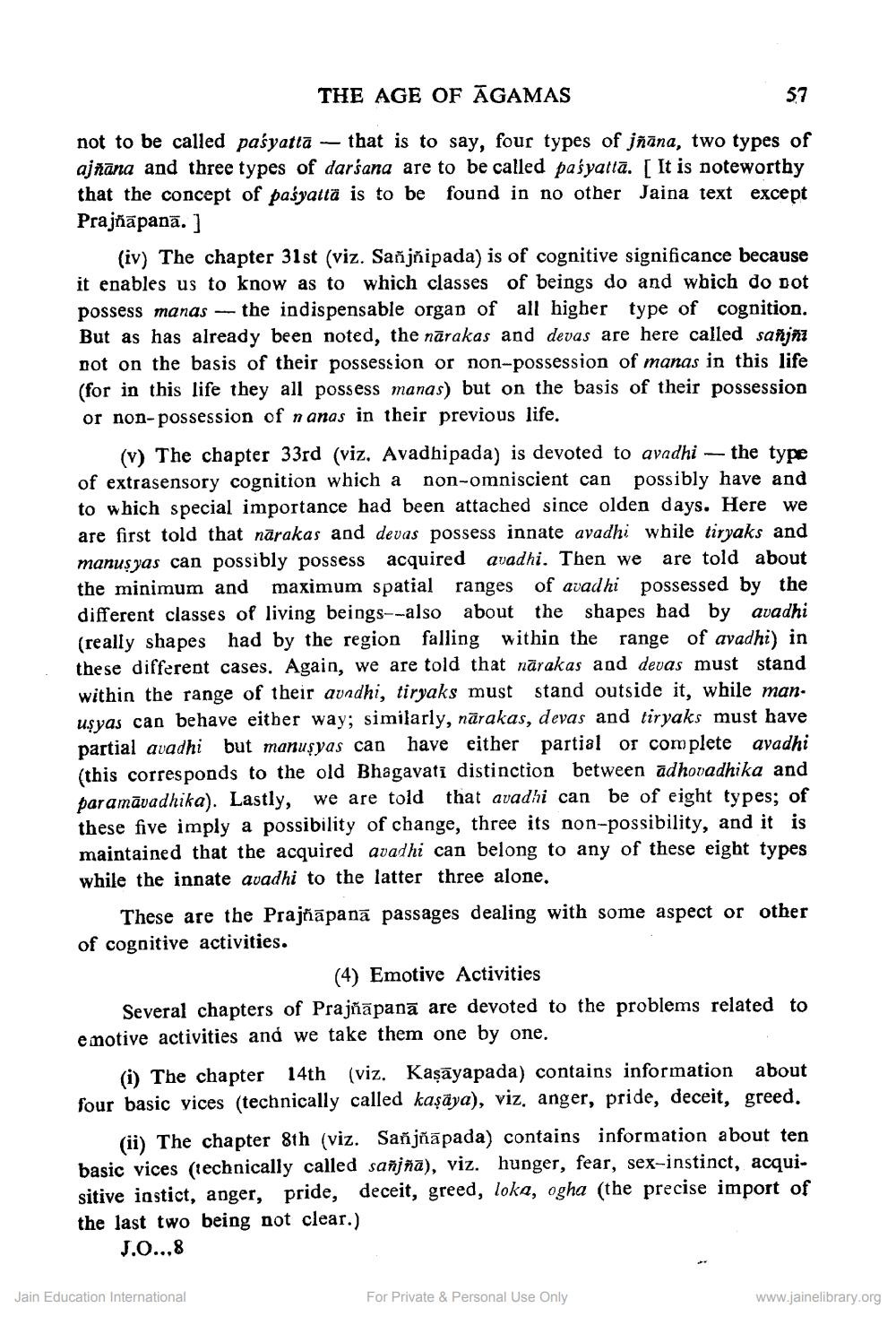________________
THE AGE OF ĀGAMAS
57
not to be called paśyatta -- that is to say, four types of jñāna, two types of ajñāna and three types of darśana are to be called pasyatlā. [ It is noteworthy that the concept of paśyatta is to be found in no other Jaina text except Prajnapana. ]
(iv) The chapter 31st (viz. Sanjñipada) is of cognitive significance because it enables us to know as to which classes of beings do and which do not possess manas -- the indispensable organ of all higher type of cognition. But as has already been noted, the nārakas and devas are here called sañjni not on the basis of their possession or non-possession of manas in this life (for in this life they all possess manas) but on the basis of their possession or non-possession of nanas in their previous life.
(v) The chapter 33rd (viz. Avadhipada) is devoted to avadhi — the type of extrasensory cognition which a non-omniscient can possibly have and to which special importance had been attached since olden days. Here we are first told that närakas and devas possess innate avadhi while tiryaks and manuş yas can possibly possess acquired avadhi. Then we are told about the minimum and maximum spatial ranges of avadhi possessed by the different classes of living beings--also about the shapes had by avadhi (really shapes had by the region falling within the range of avadhi) in these different cases. Again, we are told that närakas and devas must stand within the range of their avadhi, tiryaks must stand outside it, while man. usyas can behave either way; similarly, nārakas, devas and tiryaks must have partial avadhi but manuşyas can have either partial or complete avadhi (this corresponds to the old Bhagavati distinction between adhovadhika and paramāvadhika). Lastly, we are told that avadhi can be of eight types; of these five imply a possibility of change, three its non-possibility, and it is maintained that the acquired avadhi can belong to any of these eight types while the innate avadhi to the latter three alone,
These are the Prajñāpanā passages dealing with some aspect or other of cognitive activities.
(4) Emotive Activities Several chapters of Prajñāpanā are devoted to the problems related to emotive activities and we take them one by one.
(i) The chapter 14th (viz. Kaşayapada) contains information about four basic yices (technically called kaşaya), viz, anger, pride, deceit, greed.
(ii) The chapter 8th (viz. Sanjñāpada) contains information about ten basic vices (technically called sanjñā), viz. hunger, fear, sex-instinct, acquisitive instict, anger, pride, deceit, greed, loka, ogha (the precise import of the last two being not clear.)
J.O..,8
Jain Education International
For Private & Personal Use Only
www.jainelibrary.org




